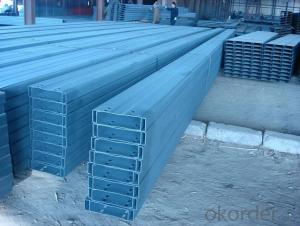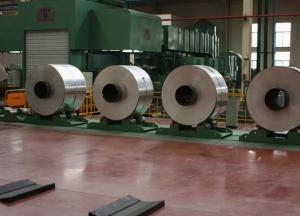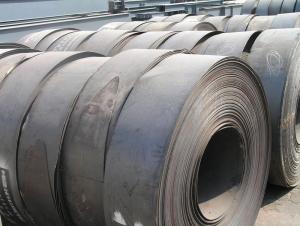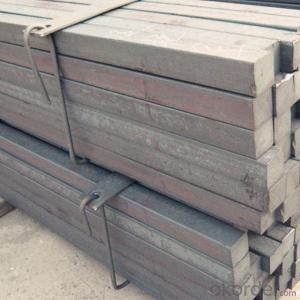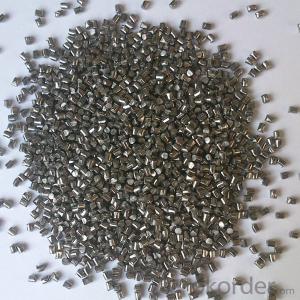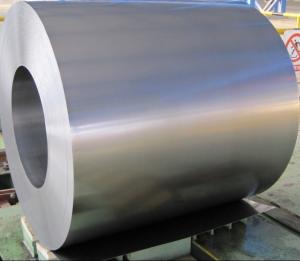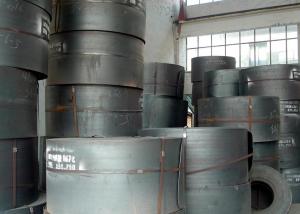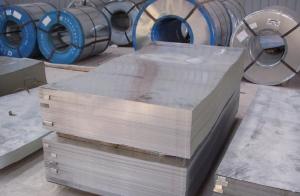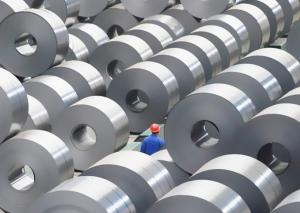Cold Rolled C Channel with High Quality C180
- Loading Port:
- China main port
- Payment Terms:
- TT OR LC
- Min Order Qty:
- 100 m.t
- Supply Capability:
- 15000 m.t/month
OKorder Service Pledge
OKorder Financial Service
You Might Also Like
Item specifice
Specifications of Cold Rolled C Channel with High Quality C180:
1.Our Cold Rolled C Channel with High Quality C180 has lots of advantages, just as followings:
a) At reasonable price and good quality.
b) To be convenient in construction and to save much time and labor.
c) The length of Cold Rolled C Channel can be manufactured according to customer’s requirements.
d) The Cold Rolled C Channel has strong mechanical strength.
e). The Cold Rolled C Channel possesses various kind of fittings, through which it is suitbal for many combinations.
The detailed sections of Cold Rolled C Channel with High Quality C180 as per GB standard:
| Model | Section size | |||
| h(mm) | b(mm) | a(mm) | s(mm) | |
| C160 | 160 | 60 | 20 | 1.6-3.2 |
| C180 | 180 | 60 | 20 | 1.6-3.2 |
| C180 | 180 | 75 | 20 | 1.6-3.2 |
The mechanical property of MS Cold Rolled C Channel with High Quality C180 according to Q235B:
Alloy No | Grade | Yielding Strength Point(Mpa) | |||
Thickness(mm) | |||||
≦16 | >16-40 | >40-60 | >60-100 | ||
≧ | |||||
Q235 | B | 235 | 225 | 215 | 205 |
Alloy No | Grade | Tensile Strength(Mpa) | Elongation After Fracture(%) | |||
Thickness(mm) | ||||||
≦16 | >16-40 | >40-60 | >60-100 | |||
≧ | ||||||
G235 | B | 375-500 | 26 | 25 | 24 | 23 |
FAQ:
Q1: Why buy Materials & Equipment from OKorder.com?
A1: All products offered by OKorder.com are carefully selected from China's most reliable manufacturing enterprises. Through its ISO certifications, OKorder.com adheres to the highest standards and a commitment to supply chain safety and customer satisfaction.
Q2: How do we guarantee the quality of our products?
A2: We have established an advanced quality management system which conducts strict quality tests at every step, from raw materials to the final product. At the same time, we provide extensive follow-up service assurances as required.
Q3: How soon can we receive the product after purchase?
A3: Within three days of placing an order, we will arrange production. The shipping date is dependent upon the quatity, how many sizes you want and the plan of production, but is typically 1 month to 2 months from the beginning of production.
Images of Cold Rolled C Channel with High Quality C180:


*If you would like to get our price, please inform us the size, standard/material and quantity. Thank you very much for your attention.
- Q:How do steel products contribute to sustainable development?
- Steel products contribute to sustainable development in multiple ways. Firstly, steel is one of the most recyclable materials, meaning that it can be reused indefinitely without losing its properties. This reduces the demand for raw materials and minimizes waste generation. Secondly, steel is highly durable and long-lasting, which means that products made from steel have a longer lifespan and require fewer replacements. This reduces the overall consumption of resources and energy. Additionally, steel is a key component in the construction industry, which plays a vital role in sustainable infrastructure development. Steel structures are known for their strength, flexibility, and resistance to natural disasters, making them an ideal choice for green buildings and sustainable urbanization. Lastly, the steel industry has been adopting various measures to reduce its environmental impact, such as improving energy efficiency, reducing greenhouse gas emissions, and implementing sustainable production practices. These efforts further contribute to sustainable development by minimizing the industry's carbon footprint and preserving natural resources.
- Q:How is steel tubing used in the production of furniture?
- Steel tubing is commonly used in the production of furniture to provide structural support and stability. It is often used for the frames of chairs, tables, and other pieces of furniture to ensure durability and longevity. Steel tubing also allows for versatile designs and can be bent or molded into various shapes to meet the desired aesthetic and functional requirements of the furniture.
- Q:How is steel used in the manufacturing of kitchen utensils?
- Steel is commonly used in the manufacturing of kitchen utensils due to its strength, durability, and resistance to corrosion. It is used to make various utensils such as knives, spoons, forks, and cookware. The versatility of steel allows for the production of sharp and long-lasting cutting edges, sturdy handles, and easy-to-clean surfaces, making it an ideal material for kitchen utensils.
- Q:What are the different types of heat treatments for steel?
- There are several different types of heat treatments for steel, including annealing, normalizing, quenching, tempering, and case hardening. Annealing involves heating the steel to a specific temperature and then slowly cooling it to relieve internal stresses and improve its ductility. Normalizing is similar to annealing, but the steel is cooled in still air instead of a controlled environment. Quenching involves rapidly cooling the steel to increase its hardness, while tempering is a subsequent heat treatment that reduces the brittleness caused by quenching. Case hardening is a process where only the outer surface of the steel is hardened, making it more wear-resistant while maintaining a tough core.
- Q:How does the thickness of steel affect its strength?
- The thickness of steel directly affects its strength. Generally, thicker steel tends to be stronger and more resistant to deformation or failure under load. This is because thicker steel has a greater cross-sectional area, which allows it to distribute and withstand forces more effectively. Thicker steel also provides a larger volume for the material to absorb energy before reaching its breaking point. However, it is important to note that there is a trade-off between thickness and other factors such as weight and cost, so the optimal thickness depends on the specific application and requirements.
- Q:Can steel be used in the production of food-grade equipment?
- Yes, steel can be used in the production of food-grade equipment. Stainless steel is commonly used in the food industry due to its high corrosion resistance, durability, and ease of cleaning. It is non-reactive, does not leach harmful substances into food, and meets the necessary hygiene and safety standards for food processing and storage.
- Q:How are steel products used in the construction of public transportation systems?
- Steel products are commonly used in the construction of public transportation systems due to their strength, durability, and versatility. Steel is used in the fabrication of various components such as rails, bridges, tunnels, and support structures, ensuring a safe and reliable transportation infrastructure. Additionally, steel is also used in the manufacturing of vehicles such as buses, trains, and trams, providing a sturdy and efficient mode of transportation for the public.
- Q:What are the common types of steel products used in the mining industry?
- The common types of steel products used in the mining industry include steel pipes, steel plates, steel bars, and steel structures. These products are used for various applications such as transporting materials, supporting mining equipment, and constructing infrastructure in mining operations.
- Q:How is steel used in the energy sector?
- Steel is used in the energy sector in various ways, primarily for infrastructure and equipment. It is used to construct power plants, transmission towers, and pipelines, providing the necessary structural strength and durability. Additionally, steel is used in the production of turbines, generators, and transformers, which are crucial components in the generation and distribution of electricity.
- Q:What are the different types of steel shelving systems?
- There are several different types of steel shelving systems available, including boltless shelving, rivet shelving, wire shelving, and industrial shelving.
1. Manufacturer Overview |
|
|---|---|
| Location | |
| Year Established | |
| Annual Output Value | |
| Main Markets | |
| Company Certifications | |
2. Manufacturer Certificates |
|
|---|---|
| a) Certification Name | |
| Range | |
| Reference | |
| Validity Period | |
3. Manufacturer Capability |
|
|---|---|
| a)Trade Capacity | |
| Nearest Port | |
| Export Percentage | |
| No.of Employees in Trade Department | |
| Language Spoken: | |
| b)Factory Information | |
| Factory Size: | |
| No. of Production Lines | |
| Contract Manufacturing | |
| Product Price Range | |
Send your message to us
Cold Rolled C Channel with High Quality C180
- Loading Port:
- China main port
- Payment Terms:
- TT OR LC
- Min Order Qty:
- 100 m.t
- Supply Capability:
- 15000 m.t/month
OKorder Service Pledge
OKorder Financial Service
Similar products
New products
Hot products
Related keywords
